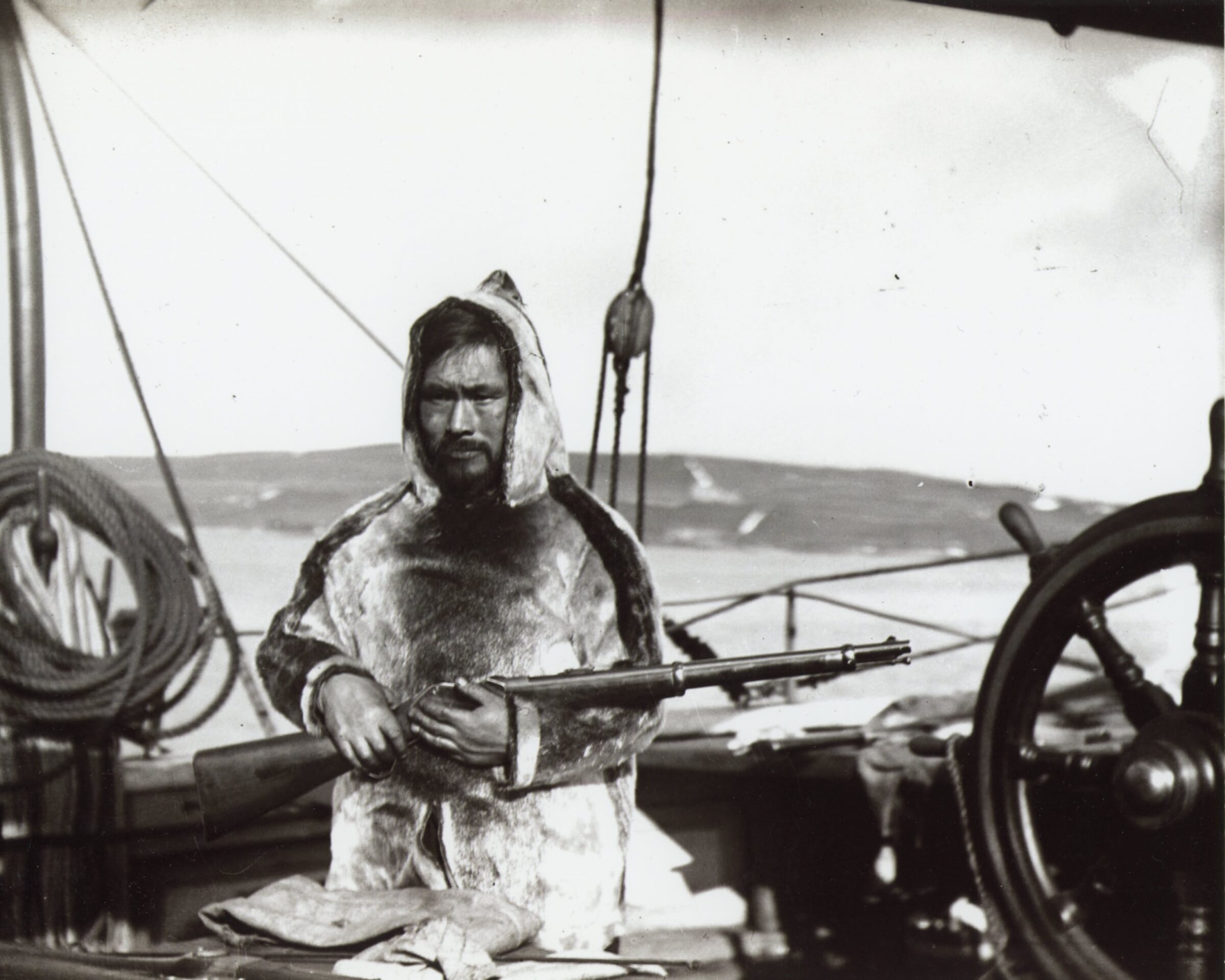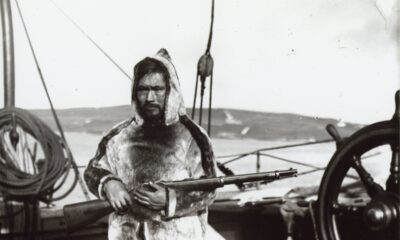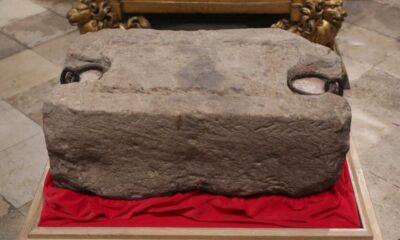Education
Etwango’s Journey: From Dundee to Homecoming in 1887

In mid-March 1887, Etwango returned to his home after a five-month stay in Dundee, Scotland. During his visit, he made significant strides in learning English and became well-known in the city. Capt. William Adams, who befriended Etwango, raised approximately £17 to support him. With this money, Etwango purchased a rifle, shotgun, and ammunition, receiving numerous gifts from well-wishers at the docks as he prepared to leave.
Etwango’s departure from Dundee was marked by a warm send-off. Although he received a prayer book from a minister, he struggled with English literacy, limiting its usefulness. His possessions included a chest of tools and various knives, alongside a generous donation of comforters and about 200 yards of flannel for his wife, courtesy of Mrs. Adams.
The ship, Maud, made a brief stop in Lerwick, Shetland, where Etwango continued to impress locals. Described as “the Eskimo chief,” he captivated a crowd of around 2,000 people by paddling a kayak and performing native songs and dances at the town hall. The local press noted his popularity, and he returned with more gifts for his family, further enriching their lives.
After leaving Lerwick, the Maud headed towards Davis Strait, where the crew hunted bowhead whales and walruses. The ice conditions in Melville Bay forced Capt. Adams to alter their route, leading them towards the Baffin coast. During this time, Etwango appeared withdrawn and “disconsolate,” suggesting he may have felt conflicted about returning to his previous life after experiencing life in Dundee.
Upon reaching Durban Harbour, land-fast ice blocked their way. Etwango and some shipmates trekked about 15 miles over the ice to signal to the Inuit. When his fellow Inuit arrived to greet him, Etwango felt a mixture of joy and melancholy. He reunited with his family, exchanging a calm handshake with his wife but displaying visible happiness upon seeing his daughter.
His wife, who initially seemed indifferent, expressed her excitement at receiving gifts from Dundee, including a melodeon—a button accordion. To the crew’s surprise, she played a familiar Scottish tune, “There’s Nae Luck about the House,” followed by “The Keel Row,” showcasing her musical talent. This moment highlighted the cultural exchange that had occurred during Etwango’s time in Scotland, as he had brought back not only material gifts but also a connection to a different way of life.
Etwango also returned with petticoats for the women in his community, which they eagerly adopted over their sealskin dresses. Capt. Adams described Etwango as “an honest, hard-working, warm-hearted fellow” who had earned the respect of his crewmates and demonstrated remarkable skill as a seal hunter. Despite his success, Etwango expressed a desire to return to Dundee with his family the following year, a wish that ultimately went unfulfilled.
The following spring, Capt. Adams returned to Davis Strait but found Etwango in a state of distress. His wife’s stepmother had moved in following the death of her husband, disrupting their once peaceful household. Reports indicated that the older woman influenced Etwango’s wife to leave for Cumberland Sound while he was away hunting, taking with them many gifts he had brought from Dundee.
The Dundee Advertiser noted the difficulties in Etwango’s personal life, stating, “It appears that the course of true love does not run any smoother among the Esquimaux than it does among more civilized people.” Grief-stricken, Etwango wished to return to Dundee on the Maud, but familial pressures persuaded him to stay.
The next year, ice conditions again barred Capt. Adams from reaching Durban Harbour, and tragically, he passed away shortly after. The fate of Etwango remains unknown, leaving questions about his life after these events unanswered. Did his wife return? Did he follow her to Cumberland Sound? The historical record offers no further insight into his life after this poignant chapter.
This account serves as a reminder of the complexities of cultural exchange and the human experience. It highlights the interplay between hope and hardship that often accompanies journeys like Etwango’s. The column, Taissumani, curated by historian Kenn Harper, provides a glimpse into the rich tapestry of events that shape our understanding of history.
-

 World3 months ago
World3 months agoScientists Unearth Ancient Antarctic Ice to Unlock Climate Secrets
-

 Entertainment3 months ago
Entertainment3 months agoTrump and McCormick to Announce $70 Billion Energy Investments
-

 Lifestyle3 months ago
Lifestyle3 months agoTransLink Launches Food Truck Program to Boost Revenue in Vancouver
-

 Science3 months ago
Science3 months agoFour Astronauts Return to Earth After International Space Station Mission
-

 Technology2 months ago
Technology2 months agoApple Notes Enhances Functionality with Markdown Support in macOS 26
-

 Top Stories2 weeks ago
Top Stories2 weeks agoUrgent Update: Fatal Crash on Highway 99 Claims Life of Pitt Meadows Man
-

 Sports3 months ago
Sports3 months agoSearch Underway for Missing Hunter Amid Hokkaido Bear Emergency
-

 Politics3 months ago
Politics3 months agoUkrainian Tennis Star Elina Svitolina Faces Death Threats Online
-

 Technology3 months ago
Technology3 months agoFrosthaven Launches Early Access on July 31, 2025
-

 Politics3 months ago
Politics3 months agoCarney Engages First Nations Leaders at Development Law Summit
-

 Entertainment3 months ago
Entertainment3 months agoCalgary Theatre Troupe Revives Magic at Winnipeg Fringe Festival
-

 Politics2 weeks ago
Politics2 weeks agoShutdown Reflects Democratic Struggles Amid Economic Concerns





















